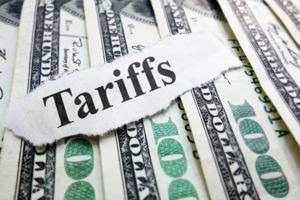Cultural authenticity: putting DEI at the heart of strategies and performance

Glen Johnson, Partner at Odgers Interim, argues that a smart and authentic approach to Diversity, Equity and Inclusion (DEI) can be an important factor in cementing or transforming organizational culture.
DEI is a hot topic and of growing importance to candidates. CNBC research finds that nearly 80% of workers want to work for a company that values DEI, and unquestionably it is an important part of organizational culture.
There is also a strong business case for DEI. Progressive, growth-minded companies have made it a critical component of their strategies and are benefiting from impressive performance gains as a result. According to McKinsey, companies in the top quartile for gender diversity on executive teams are 25% more likely to have above-average profitability than companies in the fourth quartile; while on ethnic and cultural diversity, top-quartile companies outperform those in the bottom quartile by 36%.
Genuine DEI success that delivers a positive impact on performance hinges on enabling and selecting leaders able either to carry forward an existing culture that is fit for purpose, or transform a culture that needs to evolve if the business is to continue attracting the talent it needs. It should however be noted that custodianship of an existing culture is not the same proposition as cultural transformation. The two call for different skillsets within individuals and teams.
Defining a culture is far easier than changing it and many organizations find the journey from actual to aspirational culture harder to navigate than they imagined. Making a success of the journey requires a healthy dose of realism from the outset. If you are to change, it is first important to be honest about where you’re at. And never underestimate the importance of the human element.
Katherine Armstrong, former VP of Culture and Change Management at chemicals company Solvay is an expert in this area who in 2020 launched CuSP, a consultancy that connects culture, strategy and purpose to deliver meaningful transformation. “Culture is an inherently human dynamic,” she says. “The guiding principles an organization articulates as its aspirations are merely invitations for individual human beings to show up in their own expression of the shared values. Culture transformation programs that impose a ‘sameness’ fail, because they are impositions rather than invitations.”
In other words, you can’t enforce buy in. And as Katherine makes clear, trying to impose uniformity is doomed to failure. Anyone trying to do so should slam the brakes on at once and ask themselves the question: why are we pushing for ‘sameness’ when the benefits of diversity are clear for all to see?
Great cultures are a hotbed for inclusivity and encourage fresh thinking and diverse perspectives. Sometimes bringing in expertise from outside your organization can add value and help shape that.
International Women’s Day on March 8th highlighted once again the need to accelerate equality. This year’s powerful theme #breakthebias is one we support wholeheartedly at Odgers and to celebrate that stance we produced a video in which 10 of our female leaders from across the world speak about how they have broken the bias. It’s an inspirational watch, so please check it out if you can spare a few minutes.
There is ample evidence of the link between culture and good practice in DEI. HBR research among over 19,000 readers finds that “one particular culture style differentiated the diverse and inclusive organizations from those that were not: a learning-oriented culture that emphasizes flexibility, open-mindedness, and exploration, and can equip organizations with the ability to adapt and innovate.”
If you're interested in having a conversation about how interim executives can help your organization with cultural transformation and DEI, get in touch with Glen Johnson.






